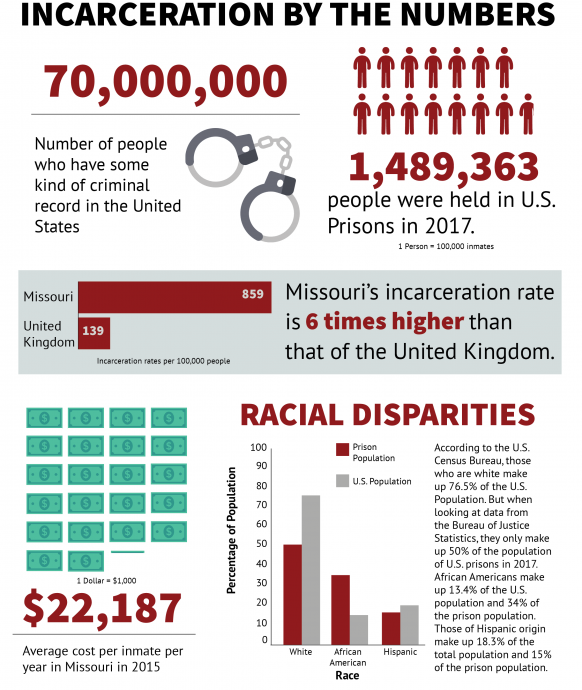Whenever I am working on a story, finding good sources and conducting quality interviews are skills that I pride myself in doing throughout the reporting process. I believe that in any story, from an in-depth series to a breaking news article, it’s crucial that a reporter gains information from a variety of experts, studies and authority figures in the community to provide a complete picture of the story.
To show you my reporting process, I wanted to walk through the steps I took when creating my four-part series, Life After, chronicling the challenges faced by those coming out of incarceration. When writing this series, I wanted to give our readers a deeper look into the criminal justice system.
 When creating Life After, I started the story from square one. I originally wanted to profile poverty in my community, but through my interviews, I was introduced to the collateral consequences of incarceration and issues with the criminal justice system affecting St. Louis.
When creating Life After, I started the story from square one. I originally wanted to profile poverty in my community, but through my interviews, I was introduced to the collateral consequences of incarceration and issues with the criminal justice system affecting St. Louis.
I was not familiar with the criminal justice system, so I looked to interview a variety of people with experience working and living in the system, as well as examining research and statistics from the government and other criminal justice organizations.
Read the full story here.
 Throughout my reporting process, I not only learned the importance of asking important questions, but also leveraging relationships in order to find sources.
Throughout my reporting process, I not only learned the importance of asking important questions, but also leveraging relationships in order to find sources.
I interviewed two employees of a local non-profit, Connections to Success, that helped build a background for the current state of local poverty alleviation and post-incarceration programs. My interviewees, Darlyshia Menzie and Stacey McKnight were invaluable to me throughout my reporting process by introducing me to the eventual focus of my story and connecting me with others in the St. Louis area.
When interviewing the employees of Connections to Success, I didn’t just want to find out about the statistics and processes that made them so successful. I wanted to hear firsthand about how their work has impacted them and their participants.
Read my interview questions with Connections to Success employees here.
Through Connections, I was able to meet with the focus of my first story, Demetrius Washington. Since Washington had served time in prison and worked to turn his life around when he was released, I looked to not only gain knowledge into his experience in and after prison, but also his motivations, insights, and who he was as a person.
Read Washington’s Interview Questions here.
I became connected with Patrick Flynn, who worked at a halfway house in downtown St. Louis. Through Flynn, I was able to sit down with Jo Cooper and Amy Higgins, who worked for the Federal Probation Office of Eastern Missouri. Their interviews helped balance out my story by showcasing experts who were familiar with the process of reentry.
Click the links to read interview questions for Patrick Flynn and the federal probation officers.

In the second story of the Life After series, I dove deep into the collateral consequences of incarceration, which are defined as restrictions faced by those with a criminal record. The story also features an infographic with more information about the criminal justice system.
To find the information and statistics used in the story, I used research and resources such as the Bureau of Justice Statistics, National Criminal Justice Reference Center, Prison Policy Initiative, Vera Institute of Justice, and the Census Bureau to support the information given by my interviewees.
Click here to read Part 2 of the Life After series.

